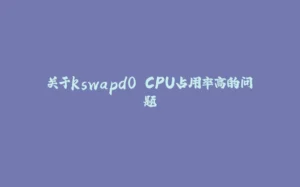Python Developer Roadmap 2024
Step 1: Introduction
- Introduction to Python
- Brief history and origin of Python
- Guido van Rossum’s role in Python’s development
- Python Environment Setup
- Installation of Python using different methods (Anaconda, virtual environments)
- Setting up an Integrated Development Environment (IDE) like VS Code, PyCharm
- Features of Python
- Dynamic typing, simplicity, readability
- High-level programming language features
- Basic Python Syntax
- Variables, data types, and expressions
- Understanding indentation and white space
- Statements, Indentation, and Comments
- Proper use of indentation
- Comments and their importance
- 7 Reasons to Learn Python
- Versatility, community support, ease of learning
- Benefits and Limitations of Python
- Use cases, strengths, and potential drawbacks
- A Career in Python
- Job roles, industries, and demand for Python developers
- Python vs Other Languages (Java, Scala, R)
- Comparison in terms of syntax, performance, and use cases
- Applications of Python
- Web development, data science, artificial intelligence, automation
- Compilers and Interpreters Available
- CPython, Jython, IronPython, PyPy
- Getting to Know the Python Interpreter
- Basics of running Python code in the interpreter
- Flavors of Python
- MicroPython, CircuitPython, IronPython
Step 2: Basics
- Python Variables
- Naming conventions, variable assignment
- Python Variable Scope
- Local, global, and nonlocal scopes
- Data Types in Python
- Integers, floats, strings, booleans
- Python Operators
- Arithmetic, comparison, logical operators
- Bitwise Operators
- Binary manipulation
- Comparison Operators
- Detailed understanding of equality, inequality
- Operator Precedence
- Order of execution in complex expressions
- Ternary Operators
- Shorthand for conditional statements
- Python Decision Making
-
if,elif,elsestatements
-
- Switch-case in Python
- Implementing switch-case using dictionaries
- Loops in Python
-
forandwhileloops
-
- Numbers with Python
- Math module and its functions
- Python Strings
- String manipulation, indexing, slicing
- String Formatters and Escape Sequences
- Formatted strings, escape characters
- String Functions and Operations
- Common string methods
- The
repr()Function- Understanding the
repr()function and its use
- Understanding the
Step 3: Data Structures
- Python Lists
- List operations, methods, and built-in functions
- List Comprehension
- Creating concise lists in a single line
- The
arrayModule- Numeric arrays in Python
- Python Tuples
- Immutable sequences and use cases
- The
zip()Function- Merging multiple iterables
- Tuples vs Lists
- Choosing the right data structure
- Slicing in Python
- Extracting portions of sequences
- Binary Sequence Types:
bytes,bytearray,memoryview- Dealing with binary data
- Dictionaries in Python
- Key-value pairs, dictionary methods
- Sets in Python
- Unordered collections with unique elements
- Booleans in Python
- Logical data type
️ SPONSER ME ON GITHUB ️
Step 4: Functional Programming
- Functions in Python
- Defining functions, arguments, return values
- Lambda Expressions
- Anonymous functions for concise code
- Function Arguments
- Positional arguments, keyword arguments, default values
- Function Recursion
- Solving problems using recursive functions
- Built-in Functions
- Commonly used built-in functions
-
range()- Generating sequences of numbers
-
eval()- Evaluating dynamically created expressions
-
exec()- Executing dynamic Python code
- Decorators in Python
- Enhancing functions with decorators
- Closure in Python
- Understanding closures and their applications
- Working with
itertools- Powerful functions for iterators
Step 5: Modules and Packages
- Modules
- Creating and importing modules
-
Counter- Counting occurrences in sequences
-
Defaultdict- Default values for missing keys in dictionaries
-
OrderedDict- Preserving order of dictionary items
-
namedtuple- Creating named tuples for clearer code
- Numeric Modules:
math,decimal,random- Mathematical operations, precision, random number generation
-
sys- Accessing Python interpreter internals
- Generating Random Numbers
- Using
randommodule
- Using
- Packages
- Creating and structuring packages
-
pipand PyPI- Package management and external libraries
- Modules vs Packages
- Differences and use cases
Step 6: Miscellany
- Regular Expressions with Python
- Pattern matching and manipulation
- Multithreading in Python
- Parallel execution for improved performance
- Working with Date and Time
-
datetimemodule, formatting, time zones
-
- Namespace and Scope
- Understanding variable scope and namespaces
- Virtual Environments and Packages
- Managing dependencies with virtual environments
- The
datetimeModule (Part I and II)- In-depth exploration of date and time functions
- The
calendarModule- Working with calendars and scheduling
- The Python Debugger (
pdb)- Debugging tools and techniques
- CGI Programming with Python
- Basics of Common Gateway Interface (CGI)
- Understanding
urllib- Working with URLs and web requests
- Terminologies in Python
- Glossary of key Python terms
- What’s new in Python 3.7?
- Updates and features introduced in Python 3.7
- Deep Copy vs Shallow Copy
- Differences and use cases
- Assert Statements in Python
- Using assertions for testing
- Pretty-Printing with
pprint- Improved printing for complex data structures
Step 7: Object-Oriented Programming
- Methods in Python
- Defining methods within classes
- Methods vs Functions
- Differences and use cases
- Magic (Dunder) Methods
- Special methods for customization
- Classes in Python
- Creating and using classes
- Abstract class
- Defining abstract classes for inheritance
- Concrete class
- Instantiating concrete classes
- Python Objects
- Instances, attributes, and methods
- Inheritance in Python
- Extending classes and reusing code
- Multiple Inheritance
- Managing complexity with multiple base classes
- Python Operator Overloading
- Customizing behavior for operators
- Generators in Python
- Lazy evaluation for memory-efficient code
- Iterators in Python
- Creating iterable objects
- Generators vs Iterators
- Differences and use cases
- Serialization with
pickle- Serializing and deserializing Python objects
- The
propertyDecorator- Creating read-only and calculated attributes
Step 8: File Handling
- Reading and Writing Files
- Opening, reading, and writing to files
- Managing Directories and Files
- Operations on directories and file paths
- The
osModule- Interacting with the operating system
- The
shutilModule- High-level file operations
- Copying Files with Python
- Copying files and directories
- Renaming Files with Python
- Changing file names programmatically
- Zipping Files with Python
- Creating and extracting zip archives
Step 9: Exception Handling
- Errors and Exceptions
- Different types of errors in Python
- Exception Handling
- Using
try,except,finallyblocks
- Using
- Testing with
unittest- Unit testing for robust code
Step 10: Important Libraries
- Python Libraries
- Overview of key Python libraries and their applications
-
NumPy- Numerical computing in Python
-
SciPy- Scientific computing with additional functionality
-
pandas- Data manipulation and analysis
- Visualizing with
matplotlib- Creating various types of plots and visualizations
-
PyQT- Developing desktop applications with Python
-
PyGTK- GTK+ toolkit integration for Python
-
PyTorch- Deep learning library
-
Altair- Declarative statistical visualization library
- Web Scraping with
Scrapy- Extracting data from websites
- Data access mechanisms
- Connecting to databases, data storage
-
Spacy- Natural Language Processing (NLP) library
-
pygame- Game development with Python
-
tkinter- GUI development toolkit
️ SPONSER ME ON GITHUB ️
Step 11: Other Functionality
-
XML Processing
- Reading and writing XML files
-
Sending Mail with Python
- Sending emails programmatically
-
Networking
- Basics of network programming
-
Processing Images
- Working with images in Python
-
GUI Programming
- Developing graphical user interfaces
-
Forensics
- Basics of digital forensics with Python
-
Extensions to Python
- Exploring Python extension modules
-
Tools
- Popular Python development tools and IDEs
-
Accessing the Database
- Database connectivity and querying
-
Logging with Python
- Implementing logging for debugging and monitoring
-
Descriptors
- Understanding descriptors in Python
-
Buffering Protocol
- Managing input/output buffering
-
WSGI Protocol
- Web Server Gateway Interface for web applications
-
Context Managers
- Implementing and using context managers
-
Design Patterns
- Common design patterns in Python
-
Async.io
- Asynchronous I/O for concurrent programming
-
Metaprogramming
- Techniques for writing code that manipulates code
Project-Based Learning
- Introduce project-based learning with practical Python projects.
- Provide examples in web development, data analysis, and machine learning.
Best Practices and Code Style
- Discuss Python best practices and adherence to coding standards.
- Emphasize the importance of following PEP 8.
Testing and Test-Driven Development (TDD)
- Introduce testing principles and the use of unittest and pytest.
- Encourage the adoption of test-driven development.
Continuous Integration and Deployment (CI/CD)
- Guide developers on setting up CI/CD pipelines using Jenkins, Travis CI, or GitHub Actions.
Containerization and Docker
- Explore containerization with Docker for Python applications.
- Cover Docker images, Docker Compose, and container orchestration.
Web Development Frameworks Beyond Django and Flask
- Explore other web development frameworks like FastAPI, Tornado, and Pyramid.
- Provide tutorials on building applications with these frameworks.
Database Connectivity and ORM
- Extend the section on database access to include ORM with SQLAlchemy.
- Discuss connecting to various databases and performing CRUD operations.
Advanced Topics in Data Science and Machine Learning
- Dive deeper into advanced topics like deep learning with TensorFlow or PyTorch.
- Explore NLP with spaCy and reinforcement learning.
Cloud Services and Deployment
- Guide developers on deploying Python applications to cloud platforms (AWS, Azure, Google Cloud).
- Discuss serverless computing, container orchestration, and cloud-native development.
Security Best Practices
- Emphasize security best practices for Python applications.
- Discuss common vulnerabilities, secure coding techniques, and code analysis tools.
Performance Optimization
- Provide tips and techniques for optimizing Python application performance.
- Discuss profiling tools, caching strategies, and code optimization.
Collaboration and Version Control
- Discuss collaboration tools like Git and platforms such as GitHub or GitLab.
- Explain branching strategies, pull requests, and code review best practices.
Community Engagement
- Encourage readers to engage with the Python community.
- Discuss participating in open-source projects, attending conferences, and joining forums.
Interview Preparation
- Include a section on preparing for Python developer interviews.
- Provide common interview questions, coding challenges, and tips for technical interviews.
Updates on Latest Python Releases
- Regularly update the blog with information on the latest Python releases.
- Highlight new features, improvements, and changes in best practices.
Step 12: Popular Frameworks
- Selenium
- Automation testing and web scraping
- Web Frameworks
- Overview of various web frameworks
- Django
- Full-stack web development framework
- Flask
- Lightweight web framework for small to medium-sized applications
- Django
- Overview of various web frameworks
Step 13: Specializations
- Learn advanced Data Structures and Algorithms
- Advanced data structures (trees, graphs), algorithmic complexity
- Metaprogramming
- Advanced techniques for code manipulation
- Blockchain
- Understanding and implementing blockchain concepts
- Quantum Programming
- Basics of quantum computing and programming
- Artificial Intelligence & Deep Learning
- Neural networks, deep learning frameworks
- Machine Learning
- Machine learning algorithms, model training
- Data Science
- Exploratory data analysis, machine learning in data science
- Ethical Hacking
- Cybersecurity, ethical hacking techniques
Step 14: Continuous Learning
- Stay updated with the latest Python versions and features
- Regularly check Python official documentation and release notes
- Contribute to open-source projects
- Collaborate with the Python community on GitHub
- Join developer communities
- Participate in forums, attend meetups and conferences
- Attend conferences and webinars
- Stay informed about industry trends and best practices
- Read Python-related blogs and articles
- Follow reputable sources for Python-related content
Step 15: Soft Skills Development
- Emphasize the importance of soft skills for Python developers.
- Effective communication, teamwork, and problem-solving skills
- Discuss collaboration within development teams.
- Resources for improving teamwork and interpersonal skills
- Provide resources for soft skills improvement.
- Books, courses, and workshops for enhancing communication and collaboration
- Encourage community involvement.
- Engaging with local tech communities and online forums
Step 16: Version Control Systems Beyond Git
- Introduce other version control systems.
- Mercurial, SVN, and their use cases
- Discuss strengths and weaknesses.
- When to prefer each version control system
- Explore alternative workflows.
- Diverging and converging strategies in version control
Step 17: Python Design Patterns
- Dive into common design patterns in Python.
- Singleton, Factory, Observer, and more
- Provide examples and use cases.
- Practical applications of each design pattern
- Discuss best practices in design.
- Creating scalable and maintainable code
Step 18: Advanced Web Development
- Explore advanced web development concepts.
- Asynchronous web frameworks like FastAPI and Tornado
- Introduce WebSocket communication.
- Real-time communication in web applications
- Discuss server-sent events.
- Implementing real-time updates in web applications
Step 19: Real-time Applications with Python
- Explore building real-time applications.
- Technologies like WebSockets and asynchronous programming
- Discuss frameworks suitable for real-time use cases.
- Applications in chat, notifications, and live updates
Step 20: Microservices Architecture
- Discuss the principles of microservices architecture.
- Decoupling and scalability in modern applications
- Explore Python frameworks for microservices.
- Flask, FastAPI, and tools for building microservices
- Discuss containerization and orchestration.
- Docker, Kubernetes, and managing microservices
Step 21: DevOps Practices
- Introduce DevOps practices relevant to Python development.
- Infrastructure as code (IaC), configuration management
- Discuss continuous deployment.
- Implementing CI/CD pipelines with Jenkins, Travis CI, or GitHub Actions
Step 22: Advanced Data Processing
- Dive into advanced data processing techniques.
- Distributed computing with Apache Spark and Dask
- Explore big data solutions.
- Handling large datasets efficiently
Step 23: IoT (Internet of Things) with Python
- Explore using Python for IoT projects.
- Connecting devices, data processing, and visualization
- Discuss IoT libraries and frameworks.
- MicroPython, CircuitPython, and IoT platforms
Step 24: Quantum Computing with Python
- Provide an introduction to quantum computing principles.
- Basic concepts and principles of quantum programming
- Explore Python libraries for quantum programming.
- Qiskit, Cirq, and tools for quantum computing
Step 25: Python for Automation and Robotics
- Discuss Python’s role in automation and robotics.
- Libraries and frameworks for controlling robots and automating tasks
- Explore real-world applications.
- Building automation scripts and controlling robots with Python
Step 26: Accessibility in Python Applications
- Highlight the importance of creating accessible software.
- Principles of accessibility and inclusivity
- Discuss best practices for accessibility in Python applications.
- Implementing accessible user interfaces and content
Step 27: Contributing to Open Source
- Guide developers on how to contribute to open-source Python projects.
- Finding projects, submitting pull requests, and collaborating
- Discuss the benefits of contributing to the community.
- Skill development, networking, and giving back
Step 28: Building a Portfolio
- Offer guidance on building a strong portfolio for Python developers.
- Showcasing projects, contributions, and skills effectively
- Discuss the importance of a portfolio in job applications.
- Attracting employers and demonstrating expertise
Step 29: Python Career Paths
- Explore various career paths for Python developers.
- Roles in web development, data science, machine learning, DevOps, etc.
- Discuss specialization and niche areas.
- Choosing a career path based on interests and skills
Step 30: Staying Current in Tech
- Provide tips on staying updated with the latest trends and technologies.
- Subscribing to newsletters, following industry blogs, and participating in online communities
- Discuss the importance of continuous learning.
- Embracing a mindset of lifelong learning for career success
️ SPONSER ME ON GITHUB ️
Remember to adapt this roadmap based on your interests and career goals. The world of technology is constantly evolving, so staying curious and embracing a mindset of continuous learning is crucial for success. Happy coding!
原文链接:Python Roadmap 2024

















暂无评论内容